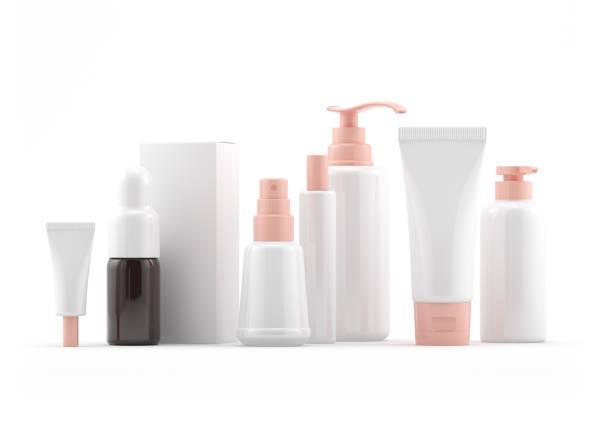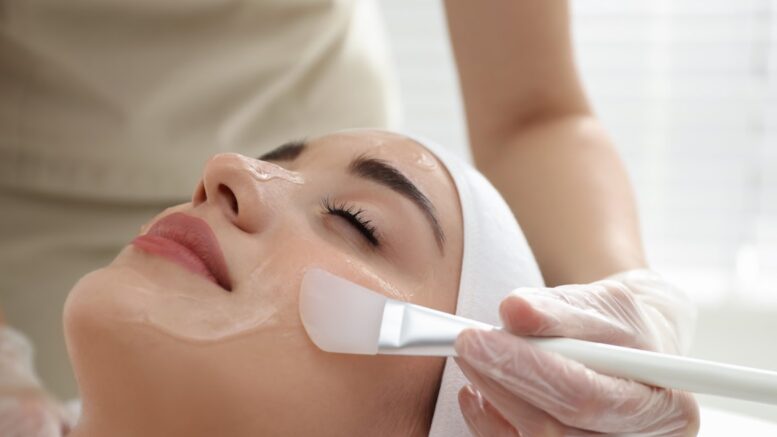Cleansing is a fundamental step in any skin‐care routine. Its importance goes beyond just removing visible dirt or makeup: over the course of the day (or overnight) skin accumulates:
- Environmental pollutants & micro‐pollution (smog, dust, exhaust particles)
- Sebum, sweat, dead skin cells that can clog pores
- Makeup, sunscreens, cosmetic residues
If these are not properly removed, they can interfere with the skin barrier, contribute to inflammation, cause breakouts or dullness, and accelerate signs of aging.
But cleaning too aggressively has downsides: stripping the skin of its natural lipids, disturbing the barrier function, causing dryness, irritation, or even reactive oiliness. The goal is: cleanse well but gently.
How cleansers differ from other skin-care products
Cleansers play a very different role from leave-on treatments. They’re designed for quick action and full removal, whereas other formulas remain on the skin to deliver ongoing benefits. Here’s a clear breakdown:
- Cleansers (balms, gels, creams, oils)
- Purpose: Dissolve sebum, makeup, sunscreen, and pollution.
- Composition: Surfactants, gentle oils, or enzymes that bind to impurities.
- Contact time: Short — meant to rinse off completely.
- Goal: Clean without stripping the skin’s natural lipids or damaging the barrier.
- Moisturizers
- Purpose: Hydrate and reinforce the barrier by sealing in water.
- Composition: Humectants (like glycerin), emollients, and occlusives that stay on the skin.
- Contact time: Long — designed to remain and create a protective film.
- Serums and targeted treatments
- Purpose: Deliver concentrated actives such as antioxidants, peptides, or retinoids.
- Composition: Lightweight emulsions or gels optimized for penetration.
- Contact time: Leave-on — ingredients work over hours to stimulate repair, even tone, or boost collagen.
- Exfoliants (chemical or mechanical)
- Purpose: Loosen or remove dead skin cells to smooth texture and enhance radiance.
- Composition: Alpha/beta hydroxy acids, polyhydroxy acids, or fine abrasives.
- Contact time: Varies — some are rinse-off masks, others stay on for gradual resurfacing.
A good cleanser prepares the skin so that moisturizers, serums, and exfoliants can perform optimally. Using a formula suited to your skin type protects the barrier and maximizes the benefits of every product that follows.
What to Look for in a Good Skin Cleanser
Here are key criteria (with guidance) for choosing a cleanser that maintains skin health:
- Formulation Type & Texture
- Balms / oils: good for removing heavy makeup, sunscreens, waterproof products.
- Creams / milky cleansers: more moisturizing, less tendency to strip.
- Gels: lighter, foaming; better for oily or combination skin if not overly drying.
- Powder or foam variants: more aggressive; use with caution if skin is sensitive.
- Active / Supportive Ingredients
The best formulas will include ingredients that do more than just clean:- Humectants (e.g. hyaluronic acid, glycerin) to retain moisture
- Soothing agents (allantoin, bisabolol, provitamin B5) to reduce irritation
- Barrier‐supportive lipids or oils (sunflower oil, sweet almond oil, etc.)
- Alternatives to harsh chemicals: instead of strong synthetic retinoids, perhaps botanical retinol (bakuchiol); instead of strong detergents, milder surfactants or emulsifiers.
- Avoidance of Potential Irritants (or Being Aware of Them)
Some sensitizers or irritating ingredients include: very strong surfactants or sulfates, high fragrance load, high alcohol content, certain essential oils for sensitive skin, etc. If skin is reactive, do patch testing. - pH & Barrier Function
The skin’s natural pH is slightly acidic (around 5–6). Products that are too alkaline can damage the barrier. Also, the cleanser should be able to rinse off without leaving a tight, stripped sensation. - Suitability for Skin Type & Conditions
- Dry / sensitive → richer/emollient cleansers, avoid over‐foaming
- Oily / acne‐prone → might prefer gel/foam, but still not overly drying; may need double cleansing if using heavy makeup or sunscreen
- Mature skin / barrier ‐ compromised → gentle but with active ingredients to support repair
Case Study: Instytutum Transforming Melting Cleanser
To illustrate how these principles work in practice, here’s a non‐commercial but descriptive look at the Instytutum Cleanser.
What It Is, and How It Works
- It is a transforming balm that first melts into an oil upon contact with dry skin. When you add a little water (moist fingertips), it converts/emulsifies into a milky texture which can then be rinsed off.
- It’s designed to dissolve makeup, impurities, “micro‐pollution”, etc., while avoiding that tight, dry feeling sometimes left after cleansers.
Key Ingredients & What They Do
Some of the notable supportive / active ingredients include:
| Ingredient | Function / Benefit |
|---|---|
| Bakuchiol | A botanical alternative to retinol. Can help refine texture without many of retinol’s irritation issues. |
| Hyaluronic acid (Sodium hyaluronate) | Strong humectant—pulls in moisture, helps maintain hydration. |
| Provitamin B5 (Panthenol) | Soothing, helps skin repair and maintain barrier integrity. |
| Allantoin, Bisabolol | Known for calming and anti‐irritant properties. |
| Vitamin E (Tocopherol / Tocopheryl acetate) | Antioxidant, supports fighting oxidative stress; also helps with barrier function and texture. |
Pros & Potential Drawbacks
Pros:
- It cleans deeply without overdrying, according to many descriptions. It dissolves makeup and environmental pollutants.
- Pleasant texture progression (balm → oil → milky emulsion) which many users find sensory (feel + experience) satisfying.
- Contains several barrier friendly agents (glycerin, oils, bisabolol, etc.) so skin feels more comfortable after cleansing.
Potential Drawbacks / Caveats:
- Fragrance / Perfume is part of its formulation. For people with very sensitive or reactive skin, fragrance is often a culprit of irritation.
- Some users report negative reactions (redness, burning, peeling) especially in sensitive zones (like the T‐zone) especially after the first uses. That suggests that although the formula is gentler than some, it’s not completely free of risk for certain skin types.
- For very oily skin, some users feel it may leave a slight film, or may not feel fully “clean” (i.e. some may prefer a second cleanser or a foaming formula afterwards).
How to Use It Safely & Effectively
Here are suggestions (in general, and specifically for this product) to minimize risk and get the best results:
- Patch test first
Apply a small amount on your jaw or behind the ear for 24 hours to check for reactions. - Use dry → wet method
- Apply on dry skin.
- Massage to dissolve makeup/pollution.
- Add water to emulsify (turn milky).
- Rinse with lukewarm water.
This helps remove oil‐soluble impurities properly. Instytutum’s cleanser follows this method.
- Frequency depending on skin type:
- If you wear daily makeup or sunscreen, using it nightly makes sense.
- If your skin is more reactive/sensitive, maybe every other day (or nightly but follow up with soothing actives / moisturiser).
- Follow with appropriate support
After cleansing, using a gentle toner, serum or moisturiser to restore or maintain the skin barrier helps. Also, applying SPF in the morning is critical, especially if using retinol‐like ingredients (like bakuchiol) or anything that increases skin sensitivity. - Monitor skin reactions
If you notice persistent redness, peeling, burning, itching: reduce use, skip fragrance‐laden products, simplify your routine, possibly consult a dermatologist.

Is It Right for You?
Here are some guidance points – check which describe you, then consider:
- YES: You tend to wear makeup / sunscreen / possibly waterproof; dislike that feeling of “soap residue” or tight, dry skin.
- YES: Your skin is normal, dry, sensitive, or combination—but not extremely acne‐prone (or oily with large pores)—if your priority is gentleness and barrier support.
- NO: If your skin is very oily, or easily congested, you might prefer to use this as first cleanse in a double‐cleansing routine, with a light gel/foam after.
- NO: If your skin is hypersensitive (rosacea, eczema, etc.), the fragrance or perfume may be a trigger; patch test or seek fragrance-free alternative.
Summary
Cleansers are more than just cosmetic—they affect skin health, barrier integrity, hydration, and long-term appearance. A well‐formulated cleanser balances efficacy (removing what needs to be removed) with gentleness (preserving what should stay there).
The Instytutum Transforming Melting Cleanser is a good example of a product that tries to combine those elements: oil/balm texture to dissolve, then emulsification to rinse clean; supportive ingredients; and a smoother experience. It isn’t perfect for everybody, especially those with sensitive skin or fragrance sensitivities, but many users find it effective and comfortable.
